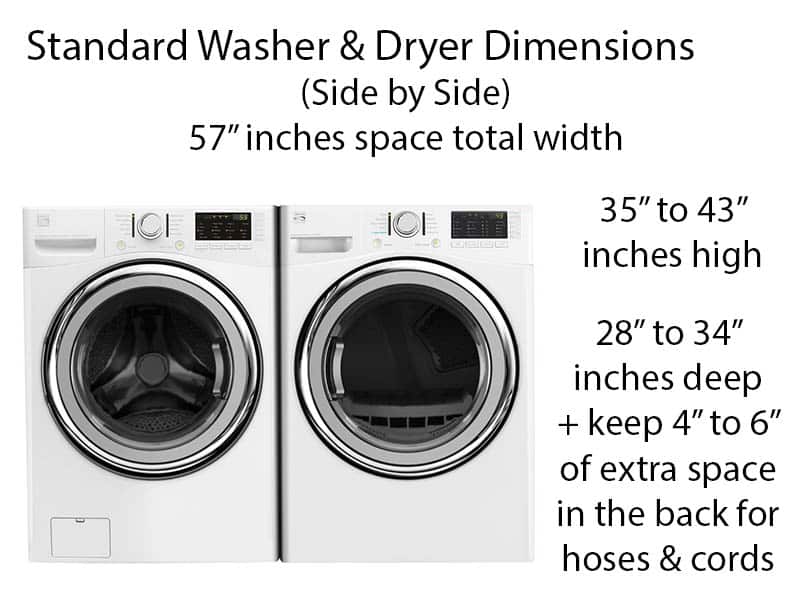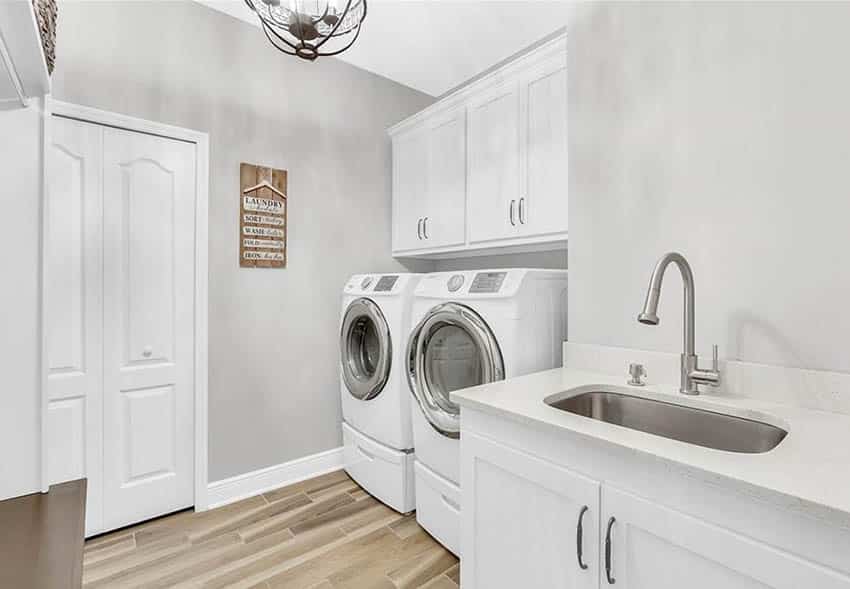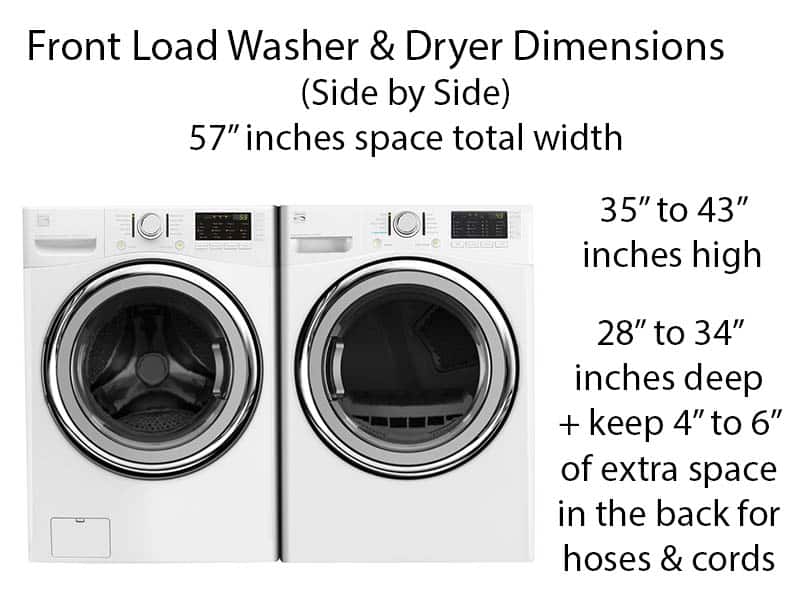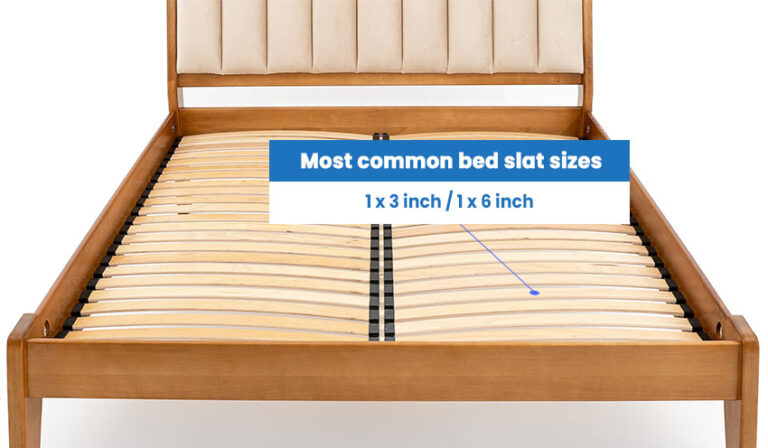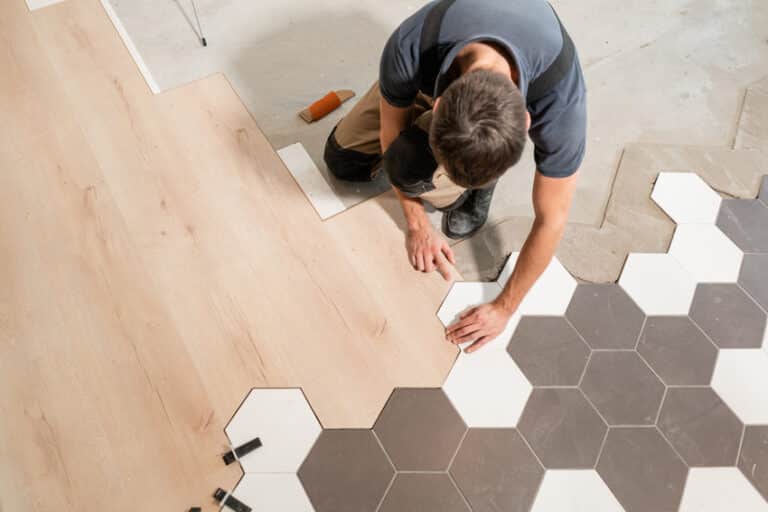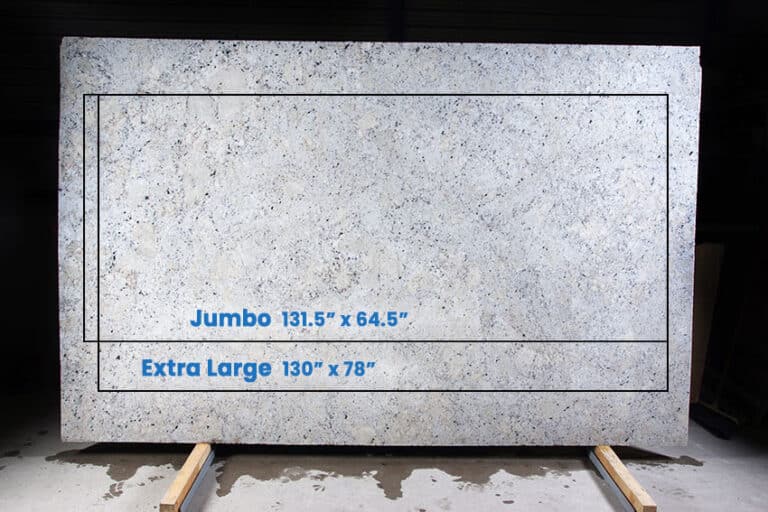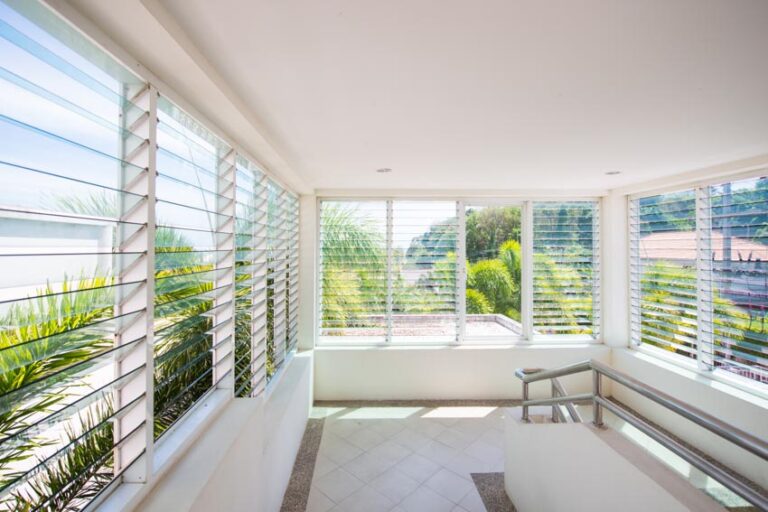Washer and Dryer Dimensions (Size Guide)
Here we share our washer and dryer dimensions size guide to help you select the right model for your laundry room design.
A washer and a dryer is an essential part of any modern home. If you have space in your home, plan for a separate laundry room; great, but if you do not, you might want to get a stackable washer and dryer.
Standard washer and dryers have different dimensions from stackable appliances. Most manufacturers will tell you what the width, height, and depth of their washer and dryer units right away. However, when determining the right size of washer and dryer for your space, you need to remember to add some clearance space.
Clearance space is basically extra room that is left at the sides and the back of the appliances. This space is necessary as there needs to be air circulation around the machines to ensure that they work well.
Having some space around your appliances also reduces the amount of noise that occurs when the machines are operating. Without clearance space, an operating washer or dryer could bang into its surroundings, damaging themselves and making a racket.
To ensure that there is proper clearance space around your washer and dryer, there needs to be one inch of space between the units and anything placed beside it. It is also necessary to leave four to six inches of space between the back of the washer and the wall.
Standard Washer and Dryer Sizes
Standard washers and dryers have a width of about 27 inches. If you plan to have these units placed side by side, you will need about 54-inches of space. And let’s not forget; you need to add about an inch of space between the appliances and their surroundings, so technically, that is around 57-inches of space.
There is a bit more variation in the height that standard washers and dryers come in. A washer or dryer has a standard height of 35 to 43 inches.
When it comes to depth, a standard washer or dryer will come with a depth of 28 to 34 inches. Don’t forget to take the four or six inches of clearing space needed into consideration before deciding on the proper depth for your units.
Front Load Dimensions
A front-load washer or dryer is basically one that has a door on the front. To load or remove clothes from the units, you must open them from the front.
Front-load washers and dryers come in the standard dimensions, though you can also get front-load products in stackable dimensions.
If you are considering a front-load washer and dryer, there is one other dimension that you will need to know – the space in front of the appliances.
You need to ensure that there are at least 24 inches of empty space in the front of your front-load washer and dryer to ensure you can open the door fully.
Stackable Washer & Dryer Dimensions
Stackable washer and dryers are rising in popularity, especially for apartment and condo dwellers, because they are portable and occupy less space compared to having a separate washer and dryer unit.
Two types of stacked washer and dryer units are available: single and freestanding. These are usually front-load washer and dryers, though a single-unit product might have a top-load washer paired with a front-loading dryer.
A single all-in-one unit, also known as a unitized model, is an appliance that is “stacked” and connected into one unit. You purchase this appliance as one piece.
A single unit washer and dryer will usually have a width of 24-27 inches and a height of 70-76 inches. The standard depth will be around 27-32 inches. However, you will need a deeper space of up to 40 inches to accommodate hoses and plugs.
Freestanding washer and dryer units are purchased separately, but they are designed to enable you to stack them on top of each other.
Compact Washer Sizes
Compact washers typically have a width starting at 24 inches or 61 centimeters, making them narrower than standard-sized washers.
Depths can vary between 24 to 26 inches or 61 to 66 centimeters. The height of compact washers falls between 33 to 36 inches or 84 to 91 centimeters. Since most dryers are paired with compact washers, compact dryers are designed to match the exact dimensions.
Compact washers and dryers have gained popularity since they offer a practical solution for homes with limited space. These smaller appliances provide all the functions of larger products while taking up less room.
One of the noteworthy advantages of compact appliances is their versatility, allowing them to be installed side by side or stacked on top of each other, depending on the homeowner’s available space. Stacking the units not only saves valuable floor space but also creates a sleek and streamlined look in many laundry areas.
Extra Large Washer Capacity Sizes
Extra-large capacity washers and dryers are there to handle larger loads of laundry, making them perfect for households with bigger families frequently laundering bulky items such as comforters, bedding, etc.
In terms of dimensions, extra-large capacity washers typically have a width ranging from 28 to 30 inches or 71 to 76 centimeters. The depth of these washers can vary between 32 to 34 inches or 81 to 86 centimeters.
The height of extra-large capacity washers usually falls within 40 to 42 inches or 102 to 107 centimeters. For extra-large capacity units, their sizes often mirror those of the companion.
While extra-large capacity washing and drying appliances offer the benefit of handling bulkier loads, it’s worth mentioning that they may consume more energy and water compared to smaller-sized products.
Clearance Space
When considering compact washer and dryer dimensions, it is essential to account for clearance space. These early measures will contribute to the longevity and optimal performance of your compact appliance.
Usually, leaving at least 1 inch or 3 centimeters of space on each side of the washer and dryer will suffice. It will allow proper airflow and prevent the appliances from rubbing against adjacent walls or cabinets.
For the back, providing a minimum of 6 inches or 15 centimeters of space behind the washer and dryer is needed. This space allows for proper ventilation and prevents the exhaust vent from becoming blocked.
Leave a minimum of 1 inch of clearance between the top of the appliances and any overhead cabinets or shelves. This is integral for homeowners looking to stack their appliances. Sometimes, it is helpful to follow the manufacturer’s guidelines for stacking their products.
For the front, allow enough space in front of the appliances for easy access to fully open the washer and dryer doors and maneuver around them comfortably. Leaving a minimum of 2 to 3 feet or 61 to 91 centimeters of clearance in front of the appliances is practical.
In addition to the clearances around the appliances, consider the overall layout and functionality of the laundry area. Ensure that there is enough space to load and unload laundry comfortably, and consider the proximity of other fixtures or features such as sinks, countertops, or laundry hampers to create a convenient and efficient workspace.
Stackable Washing Machine With Dryer Kit
To use freestanding a washer and dryer as a stackable washer and dryer, you will need to use a stacking kit.
Stacking kits fit between the units and keep them fixed together safely as one unit. They are designed to ensure that the weight of both appliances is properly distributed. They also absorb the vibrations from the machines when running.
If you use a stacking kit for your washing and dryer, you will basically end up with a unit where the dryer is on top and the washing machine is at the bottom. You need to use this configuration to ensure that the weight of your appliances is evenly distributed.
Washing machines, especially when they are in use and filled with wet clothes, are too heavy to be on top. Also, when they are in operation, they tend to vibrate more, so the entire thing will be more stable if the washing machine is on the bottom.
Generally, you can stack any freestanding unit on top of another. You just need to ensure that the width and the depth measurements are equal. If one unit is a little bigger than the other, you should still be able to stack them as long as the bigger unit is on the bottom.
Because your washer is at the bottom, you cannot buy a top-loader unit. Most stackable appliances are front-loading units.
You will be able to determine the total height of your stacked units by adding the individual heights of each unit.
If you need to elevate the appliances without stacking them on top of each other to make them easier to reach, there are pedestal products that can help.
Are washing machine stacking kits universal?
While you may be able to find a few stacking kits in the market that can be used with a variety of models, most products are actually designed specifically for use with products from a specific brand.
When you are buying a staking kit for your stackable washer and dryer, make sure that it is compatible with the units that you have.
Measuring Tips
Measuring the space is crucial when selecting a washer and dryer to ensure fit and functionality. Here are some measuring tips:
The first is to measure the width of the space where the appliances will be placed. Use a tape measure to measure the distance between the walls or cabinets surrounding the machines.
Depth also needs to be measured. This will mean measuring from the back wall to the front-facing edge of the cabinets. This measurement will help determine how far the appliances can extend into the space.
If one needs to navigate narrow doorways, hallways, or staircases when bringing in the appliances, measure those spaces as well. Making sure to leave some clearance space around the appliances for ventilation, maintenance, and ease of use is critical.
Lastly, note the location of the water supply, drain, and electrical outlets concerning the space where the appliances will be installed. Ensure the connections are easily accessible and compatible with your chosen laundry appliances.
What Size Washer Do I Need?
Specific washer and dryer sizes play a big role in determining whether these machines will seamlessly integrate into anyone’s laundry space or be a frustrating mismatch. While functionality and features are also important factors, understanding the dimensions and how they align with the available space is critical.
Determining the size of the units homeowners need depends on various factors, but most especially, their family cleaning requirements and the laundry space available.
Start by assessing laundry needs. Consider the average size of each load and the frequency by which one washes bulky items.
Available space is also a factor that will require measuring. Ensure that the dimensions of the appliances fit comfortably within the available space, leaving sufficient clearance around the sides, back, and top for ventilation and ease of use.
In relation to space, installation can go hand-in-hand. Side-by-side configurations require more horizontal space, while stacked setups utilize vertical space and are suitable for areas with less space. Other than that, considering energy efficiency ratings, special features, and the overall performance of the appliances to make an informed decision is important for many buyers.
Overall, by assessing laundry needs, available space, installation preferences, and lifestyle factors, one can determine the ideal size of washer and dryer to meet their requirements and ensure a seamless laundry experience in their homes.
For more related ideas visit our basement laundry room designs gallery.


